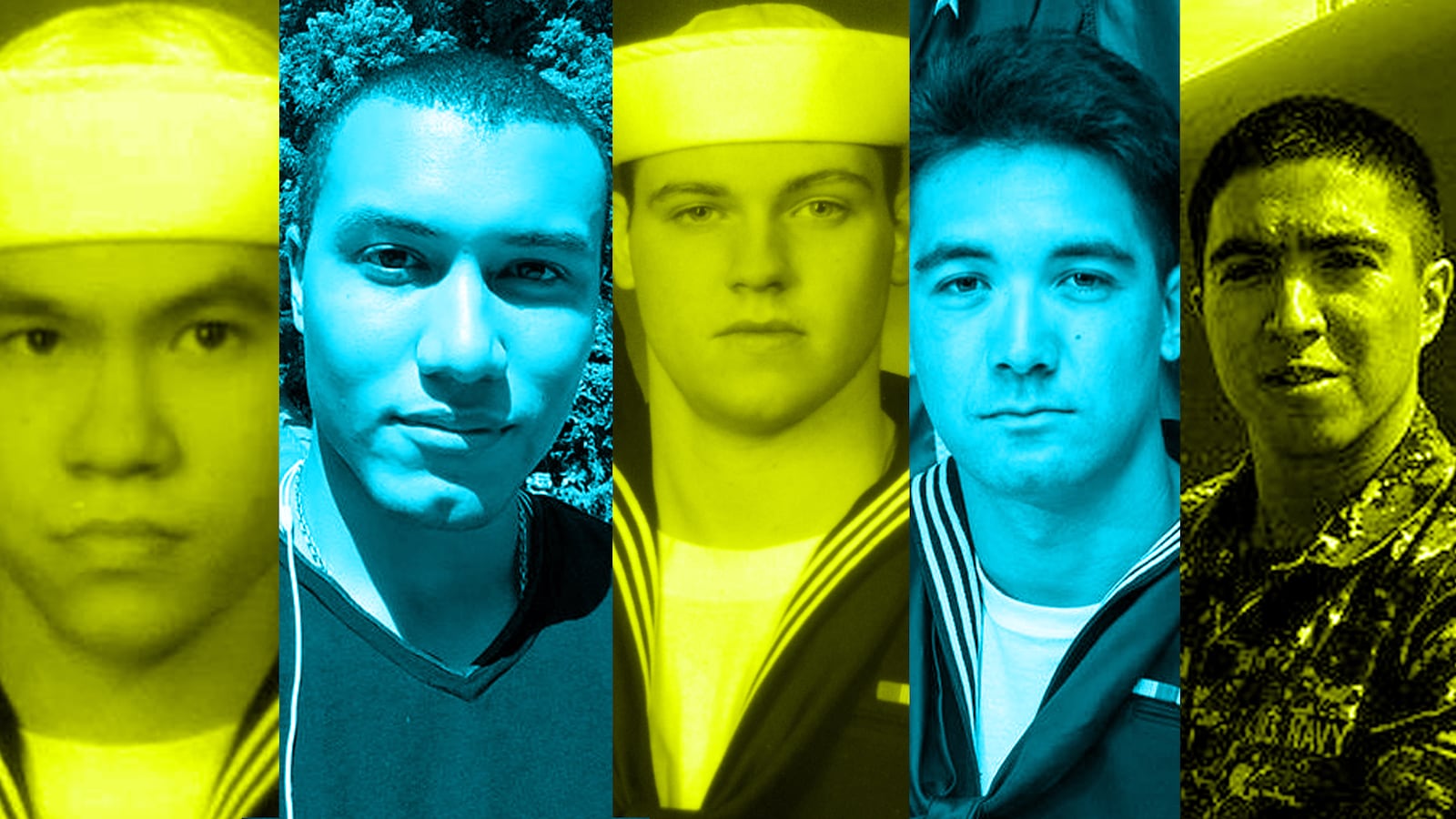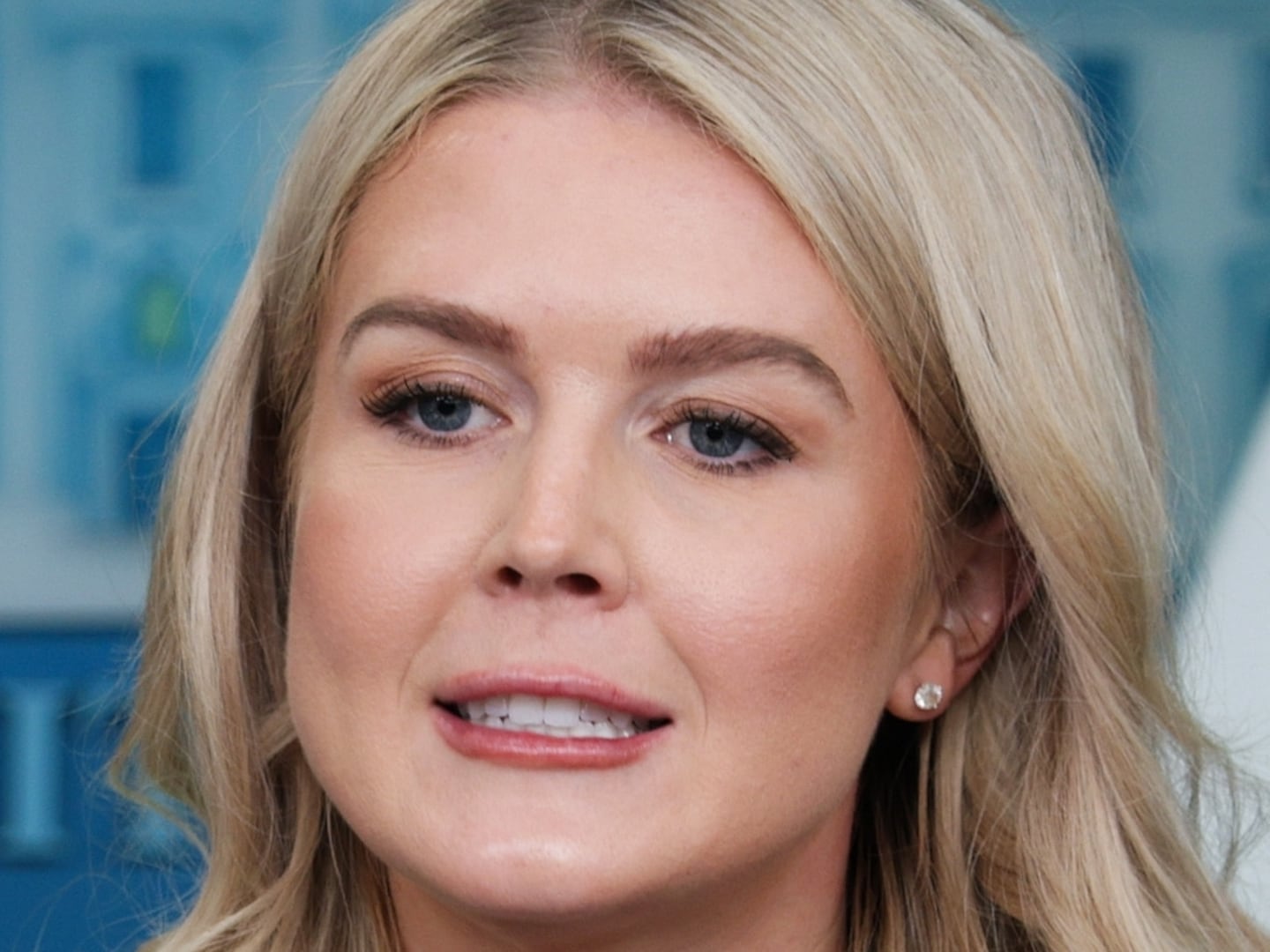As news spread through the rest of the 7th Fleet that seven sailors had perished when the USS Fitzgerald collided with a container ship, the crew of another hard-luck destroyer assembled on its stern.
The USS Cole had lost 17 sailors to a terrorist bomb in 2000. The current crew gave tribute to their ill-fated comrades from Saturday’s collision by standing in formation in the shape of the digits 62, the hull number for the destroyer Fitzgerald.
“Few words can express our sorrow for the loss of our USS Fitzgerald (DDG 62) shipmates—a simple picture must try,” read the caption when the USS Cole—hull number DDG 67—posted the tribute photo on the 7th Fleet website on Sunday.
The word “shipmates” embraced two sailors who had followed family members into the U.S. military, but also one from Vietnam and another from the Philippines and another from Guatemala and another from Okinawa. The sister of the Vietnamese-American, 25-year-old Sonar Technician 3rd Class Ngoc Truong “Tran” Huynh, had another word for those seven sailors as diverse as the country they died serving.
“Our family will never be whole again without him but we are just happy he didn’t die alone, he died with his brothers,” Mary Huynh said in a statement.
And therein resides America’s true greatness, the making of shipmates and brothers of people hailing from seemingly everywhere. Along with Tran Huynh from Vietnam and Oakville, Connecticut, these particular seven included Gunner’s Mate Seaman Dakota Kyle Rigsby, 19, from Palmyra, Virginia; Yeoman 3rd Class Shingo Alexander Douglass, 25, from Okinawa and then San Diego; Gunner’s Mate 2nd Class Noe Hernandez, 26, from Guatemala and then Weslaco, Texas; Fire Controlman 2nd Class Carlos Victor “Hitch” Ganzon Sibayan, 23, from the Philippines and then Chula Vista, California; Personnel Specialist 1st Class Xavier Alec Martin, 24, from Halethorpe, Maryland; and Fire Controlman 1st Class Gary Leo Rehm Jr., 37, from Elyria, Ohio.
The most senior of the seven, Gary Rehm, had his own particular word for these brothers/shipmates.
“The sailors on the ship he called his kids,” his uncle Stanley Rehm Jr. told The Daily Beast. “He called them his kids.”
And, by various accounts, Gary Rehm had saved at least 20 of them after the collision. He then went down to save more.
“He said, ‘If my kids die, I’m going to die,’” the uncle said.
Gary Rehm perished with the six others.
“He could have walked away and been safe,” the uncle noted.
The uncle reported that Gary Rehm had himself been a kid right out of high school when he joined the Navy, as his grandfather Stanley Rehm Sr. had during World War II.
“He wanted to be just like his grandfather,” the uncle recalled.
The grandfather had also served on a destroyer, the USS David W. Taylor, DD 551.
“[The grandfather] was so proud of that ship,” the uncle said. “He went to all the reunions.”
The uncle said the USS Taylor escorted the battleship USS Missouri into Tokyo Bay for the formal signing of the Japanese surrender in 1945.
So it seemed only fitting that Gary Rehm’s last two-year tour before he planned to retire took him aboard the destroyer Fitzgerald to Japan.
“Where his grandfather was,” the uncle said. “Japan.”
Early Saturday morning, the Fitzgerald was off the coast of Japan when it collided with the container ship ACX Crystal. Gary Rehm leapt into action to rescue his kids.
“He was saving guys,” the uncle said. “He saved quite a few of them.”
One of the ill-fated shipmates/brothers, Xavier Martin, reportedly tried to phone his father back in Maryland but could not get through.
The father, Darrold Martin, spent Father’s Day calling every father he knew and then began calling the families of the sailors who had died.
Darrold Martin and the parents of the six who had been unable to get out could at least console themselves with the thought that in the final moments their sons were joined by a senior man who could have saved himself but chose to save his kids or die trying.
On Monday, the uncle was saying that you did not need to be a sailor for Gary Rehm to come to your aid.
“He helped everybody who needed help,” the uncle said. “He was always ready to help anybody who needed it. He was just that kind of guy.”
But the ones he called his kids were closest to his heart, and when the ship was docked stateside near his home in Virginia, he would invite those who were far from home to join him on holidays.
“Christmas, Thanksgiving, Easter,” the uncle remembered.
The uncle reported that Gary Rehm never had children of his own.
“He had the Navy,” the uncle said.
These days, that meant his kids could include sailors of every race, creed, background, sexual orientation, and gender identify, all at least on the way to becoming the greatest product Made in the USA, the essential element of true greatness:
Americans.
The uncle allowed that Gary Rehm had suggested he might put off his plans to retire when the tour ended in three months if he somehow managed to secure a promotion to chief.
“And command his own ship,” the uncle said.
That dream ended as Gary Rehm sought to save the rest of his kids. The USS Fitzgerald (DDG62) is named after Navy Lt. William Fitzgerald, who received a posthumous Navy Cross during the Vietnam War for sacrificing himself so his comrades could escape an overwhelming enemy force. Gary Rehm was no less brave and selfless. He is no less deserving of having a destroyer named after him.
If some future destroyer is christened the USS Rehm—and one should be—you can bet that future kids will arrange themselves in a particular formation on the stern.
“62.”






